Governing looks at Census data on county industry reliance and population changes and finds some correlations that indicate challenges for economic growth in South Dakota.
Counties relying heavily on retirement and recreation are showing faster population growth than the national average:
Counties with heavy government employment surged a bit above the average during the recession but have retreated since:
Counties relying on manufacturing have underperformed the average population growth since the recession:
And counties relying on agriculture are losing population:
According to the 2015 Census county typology data, 41 of South Dakota’s counties are farming dependent, meaning they derive 25% of their earnings or 16% of their employment from farming. Nine counties are tagged federal/state government-dependent, meaning they rely on federal and state jobs for 14% of their earnings or 9% of their employment. Two counties—Brookings and Jerauld—are tagged manufacturing dependent, meaning thye rely on manufacturing for 23% of their earnings or 16% of their employment.
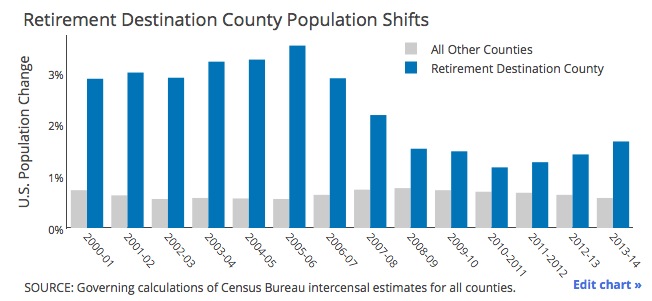
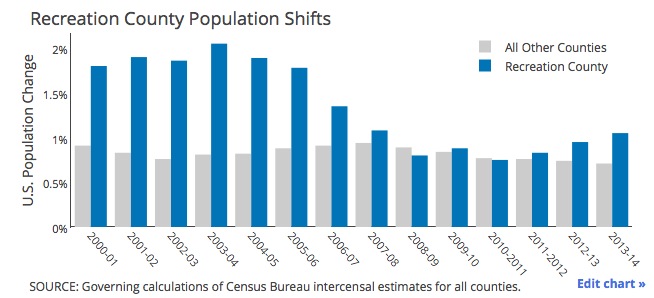
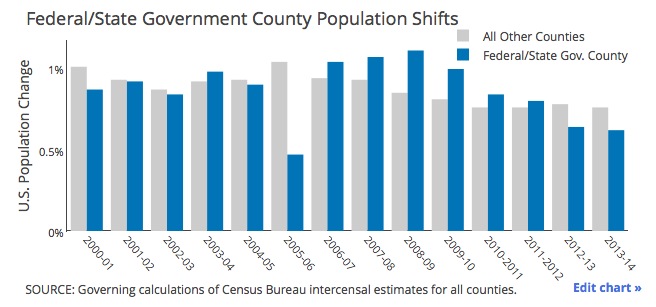
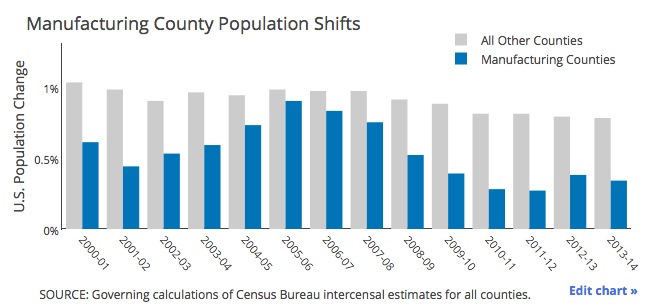
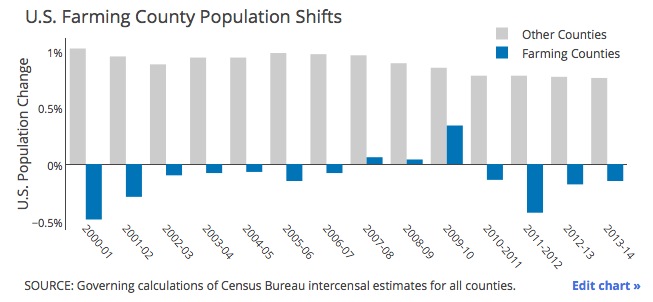
More evidence that South Dakota is an ag sacrifice zone:
http://www.moodycountyenterprise.com/v2_news_articles.php?heading=0&story_id=6413&page=73
oh, and:
http://munchies.vice.com/articles/parkinsons-disease-has-been-linked-to-drinking-milk
Any particular county dependent on graft,grift,fraud,etc?
sooooo….. if i’m understanding this right. the one industry that the state promotes over all other, is the very thing that is hurting our economy?
I don’t think it’s quite that simple, Roger. Agriculture doesn’t necessarily hurt South Dakota’s economy. Ag creates jobs, puts food on the table, etc., but the data above suggest that ag doesn’t attract population growth as well as other industries. The industrialization of agriculture has hollowed out small towns. When it only takes one guy to farm two, three, four sections, everyone else moves to Sioux Falls or Minneapolis to make a living. That doesn’t say, “Stop farming!” It says, “Don’t count on agriculture in its current hyper-industrialized form to drive population growth and economic development.”